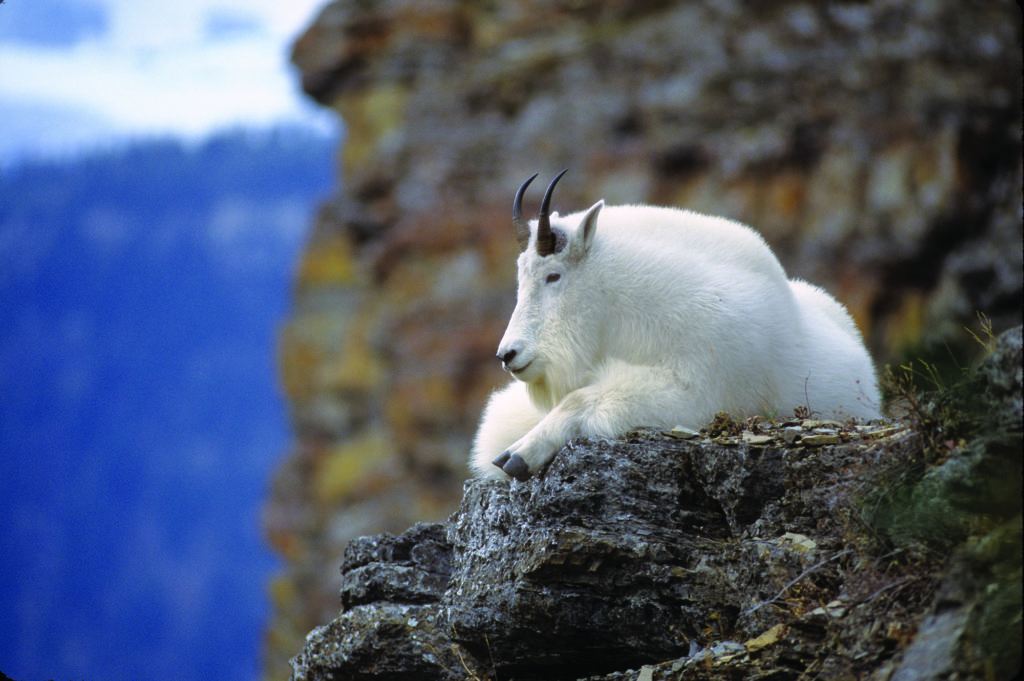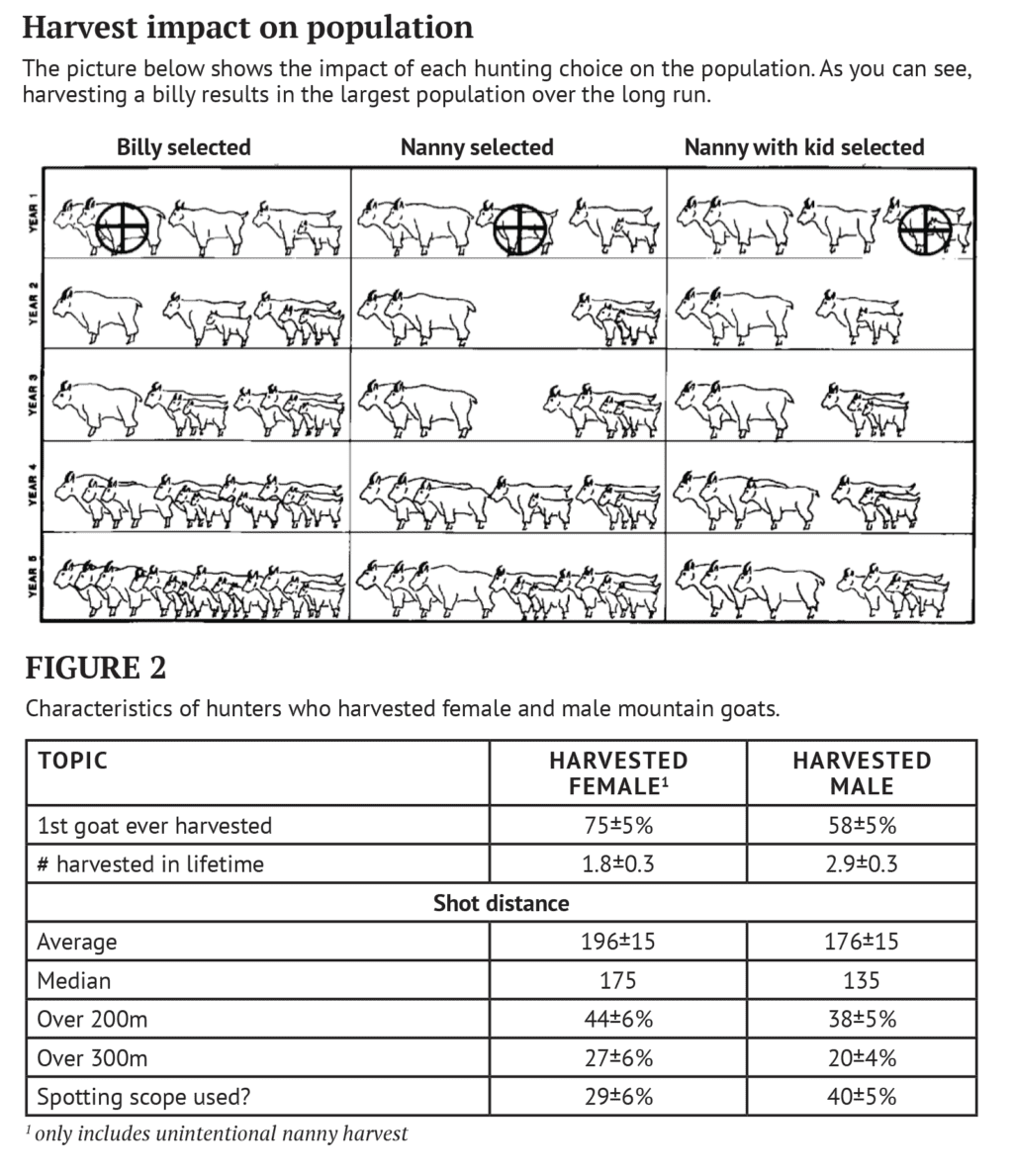
Road system mountain goat hunts are generally very popular due to their relative convenience and affordability. However, these hunts are challenging to manage because of small quotas and often high harvest of female goats, called nannies.
The number of breeding females in a population has a big impact on whether a population will grow, remain stable or decline. Mountain goat populations are slow to grow or rebuild in part because nannies do not breed until they are between four and six years old. The fewer nannies of breeding age in a population the more time it will take to replace animals that died.
Figure 1 shows the impact of each hunting choice on the population. As you can see, harvesting a billy results in the largest population over the long run.
So, now you may be wondering “With all of these reasons to not shoot a nanny, why do people shoot them?” ADF&G biologists in Southeast Alaska surveyed hunters and found that those who unintentionally harvested nannies were: 1) less experienced, 2) tended to take longer shots and 3) were less likely to use spotting scopes.
Not everyone that harvests a female does so by accident. Some hunters choose to harvest a nanny because it is what they want to eat. Hunter surveys found that 42 percent of hunters that harvested females did so intentionally. Yet, the survey found the palatability of meat harvested from males vs. females did not differ and was almost always rated as excellent or good quality. If you still choose to harvest a female on purpose, I would like to encourage you to hunt in an area with a large quota or fewer hunters.
Taking nannies results in less opportunity for everyone because the quota is reached faster. Hunting in future years is reduced (as in the Sheridan/Scott hunt) to prevent further conservation concerns. Nannies count as two against a quota; billies count as one. Biologists use these numbers to try and account for the impact that taking a nanny has on the population. When nannies are taken, especially in a small quota area, the likelihood increases that too many goats will be taken.

Hunters can help goat populations by:
- Spending time watching goats prior to hunting. Learn where they go and why. Nannies are generally found lower on the mountain and are the goats tired hunters are most likely to encounter first.
- Getting into good physical condition for the hunt. Goat hunting is challenging and tired hunters are more likely to make poor decisions.
- Learning to differentiate nannies from billies. All hunters that participate in our road-system goat hunts will be required to successfully complete the online mountain goat quiz. It can be found on our website at hunt.alaska.gov under hunting, big game species, and then mountain goat. There you can learn a lot about successfully identifying goats and you’ll be able to check your understanding by looking at pictures of goats. You can bring a print your confirmation or have it emailed to ADF&G by typing in your information when you pass the quiz.
- Bringing quality optics and spending ample time watching goats before choosing to shoot.
- Seriously evaluating shot distance and considering whether or not animals can be retrieved.
Since 2013, our road system areas have been surveyed every other year. The Sheridan Mountain area (RG231, between the Scott and Sheridan Glaciers) and the McKinley/Saddlebag area (RG230, Sheridan Glacier to the Copper River) have been stable, each with 120 to 140 goats. The maximum number of goat points for each of those areas will be six. The area between the Scott River and the Rude River (RG232) has been high the last two surveys with 300 animals observed most recently. The maximum number of goat points has been 12 and will likely be unchanged this year but survey season is not quite done. Permits are now available for the season starting Oct. 7.
Since 2013, increased population and improved measures regarding nanny harvest have resulted in quotas increasing from seven goat points available on the road system to 24! This increase has resulted in longer season with only one of the three areas closing last year. This is an impressive increase, but it won’t last if harvest is focused on nannies. The Sheridan hunt area continues to have high nanny take and a short season as a result. In 2015, the Board of Game passed a regulation that if you harvest a nanny, you cannot hunt goats in unit six again for five years.
Decisions made in the field can influence not only the success of your hunt, but the amount of opportunity remaining for everyone and the long-term health of the resource. Thanks for taking the time to make a good call.
Charlotte Westing is the Alaska Department of Fish and Game Prince William Sound area wildlife biologist. She works out of the Cordova area office and can be reached at 424-3215.





